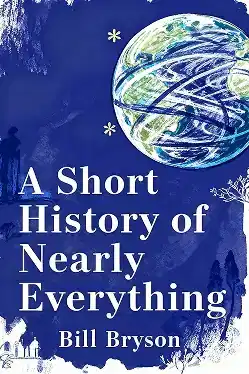What is
A Brief History of Time by Stephen Hawking about?
Stephen Hawking’s A Brief History of Time explores the origins, structure, and fate of the universe through concepts like the Big Bang, black holes, and the interplay between relativity and quantum mechanics. Written for non-scientists, it simplifies complex ideas such as entropy, time’s arrow, and Hawking radiation, using minimal equations. The book also addresses philosophical questions about time travel, cosmological expansion, and humanity’s place in the cosmos.
Who should read
A Brief History of Time by Stephen Hawking?
This book is ideal for curious readers aged 16+ with an interest in cosmology, physics, or existential questions about the universe. While accessible to non-scientists, it also appeals to students and enthusiasts seeking a foundational understanding of black holes, spacetime, and Hawking’s theories like the “no boundary proposal”.
Is
A Brief History of Time worth reading?
Yes—it’s a landmark work that sold over 9 million copies worldwide, making cutting-edge cosmology accessible to the public. Hawking’s clear analogies and humor demystify topics like quantum mechanics and entropy, though some concepts remain challenging. Its enduring popularity and influence on science communication make it a staple for curious minds.
What are the main concepts in
A Brief History of Time?
- Thermodynamic arrow of time: Entropy’s irreversible increase.
- Cosmological arrow: The universe’s expansion driving time’s direction.
- Hawking radiation: Theoretical energy emission from black holes.
- No boundary proposal: A self-contained universe without edges.
What famous quotes are in
A Brief History of Time?
Hawking humorously notes, “I have sold more books on physics than Madonna has on sex” in reference to the book’s unexpected popularity. Another key line: “The universe does not behave according to our preconceptions. It continues to surprise us”.
What criticisms exist about
A Brief History of Time?
Some critics argue Hawking oversimplifies complex theories, while others debate his dismissal of philosophical or theological interpretations of cosmology. The book’s speculative sections on time travel and quantum gravity also drew scrutiny from physicists.
How does
A Brief History of Time explain time’s arrow?
Hawking identifies three intertwined “arrows”:
- Thermodynamic: Entropy’s rise (e.g., broken cups don’t reassemble).
- Psychological: Human perception of past-to-future flow.
- Cosmological: The universe’s expansion phase.
He argues these align due to the “no boundary” universe model.
Does
A Brief History of Time discuss time travel?
Yes—Hawking explores wormholes as theoretical shortcuts in spacetime and questions whether time reversal during a universe contraction would allow backward travel. He concludes such scenarios are improbable due to entropy and observational constraints.
How did
A Brief History of Time impact popular science?
The book revolutionized science communication by making cosmology mainstream. It introduced millions to black holes, quantum theory, and the Big Bang, inspiring future science writers. Hawking’s lucid prose and publisher-mandated avoidance of equations became a template for accessible science writing.
What age group is
A Brief History of Time appropriate for?
Recommended for readers 16+ due to abstract concepts like spacetime curvature and entropy. Younger audiences may struggle with its dense subject matter, though motivated teens can grasp core ideas with guidance.
How does
A Brief History of Time compare to Hawking’s other works?
While later books like The Universe in a Nutshell delve deeper into specific topics, A Brief History remains his most iconic overview of cosmology. It balances breadth and simplicity, whereas sequels assume slightly more reader familiarity.
What scientific frameworks does Hawking propose in the book?
- Quantum gravity: A theoretical merger of relativity and quantum mechanics.
- Hawking radiation: Black holes emit energy and evaporate over time.
- No boundary condition: The universe’s self-contained origin without a singularity.




















